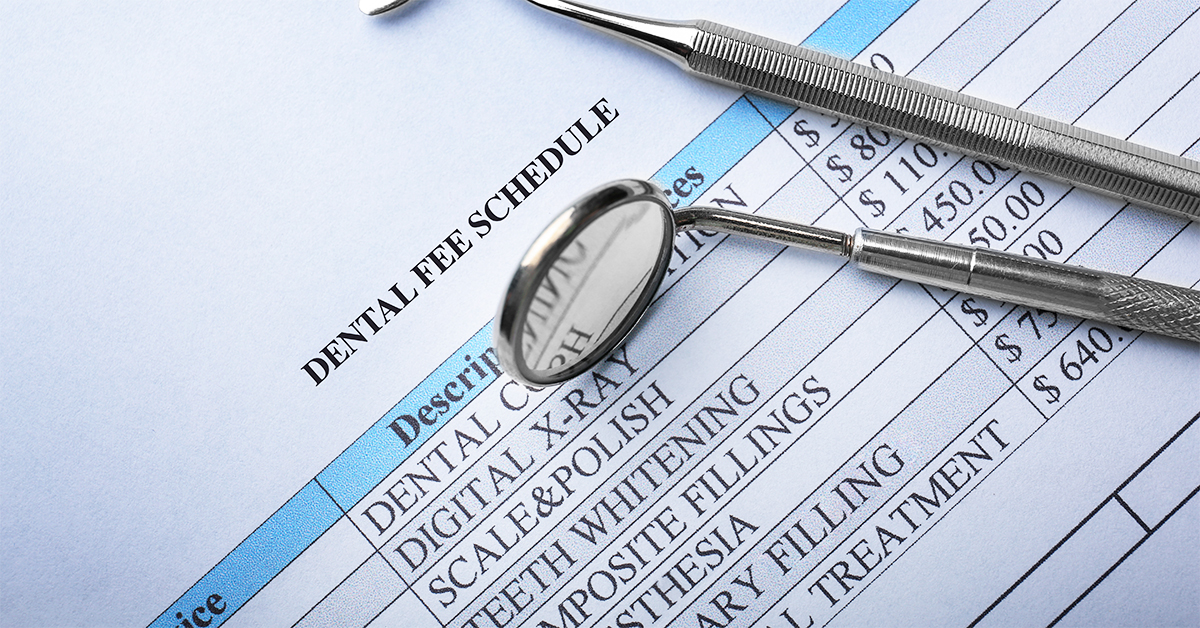Take this step to offset rising costs
The Department of Labor (DOL) stated that consumer prices rose 5.4% during the 12 months ending in September 2021. Inflation at a wholesale level climbed 8.3% from August 2020 to August 2021. Most notably, the Social Security Administration announced that beneficiaries will get a cost-of-living adjustment in 2022 of 5.9%, the largest increase in decades. It’s becoming clear that inflation fears are substantiated.
Although practice owners may not be feeling the effects of it on the consumer level at this time, it is already having a large impact on employee wages.
Partner and CPA Tom Sanders reminds, “Wages are usually the single largest expense for most businesses, especially true for dental practices. When the economy is performing well and there is a shortage of labor, like the U.S. is experiencing now, companies need to increase wages to both retain staff and attract qualified candidates.”
Rising wages creates cost-push inflation
The first and primary concern as a business owner should be to maintain your highly qualified team and keep the culture and morale of your office strong. This ensures a continuation of high-quality service to your patients, practice efficiency and profitability.
We all know the difficulties that high employee turnover creates; increased labor costs, time spent training new employees, bad morale, lower profit margin and poor patient experience. With inflation effecting employees’ personal bottom line, even those practices who have an extremely loyal staff and strong cultures are at risk.
Your employees are seeing a dramatic rise in their everyday cost of living. From increased rent, high gas prices and of course, higher prices for food, goods and services. A standard 2-4% raise (that matched inflation over the past few decades) simply won’t cut it in 2021. That will be viewed as a decrease in pay for your employees who are seeing their personal expenses rise by 5-6%, if not more.
If you position your practice on the front end of this by offering salary increases now, before the desperation sets in, you can get ahead of this problem. Being proactive will keep morale and retention up, which is especially important during a labor shortage.
CUTTING COSTS WON’T CUT IT
Salary increases are needed, but it doesn’t have to come at the expense of eroding profit margins. Practices will not be able to cut costs on supplies to ease the impact of rising payroll this time. Additionally, owners should not try to absorb the costs themselves.
Our advisors suggest salaries stay within the following percentage-of-collections ranges in order to keep your overhead healthy. In preparation for salary increases, if you find yourself outside of this range, it’s time to regain balance.
- General & Pediatric Dentists: 20-24% of Collections
- Orthodontic & Periodontic: 18-20% of Collections
- Oral Surgery & Endodontic: 15-17% of Collections
To offset the increase in payroll costs, practices need to prepare to put in place aggressive fee increases on their services. At a minimum, fees should increase by the same percentage amount as the average salary raise percentage. For some, even more.
PPO practices will need to increase fees more than practices that are primarily fee-for-service since only a portion of their patient base will initially be paying higher costs, due to the lag in increasing insurance reimbursement rates.
If you don’t think you can implement the entire fee increase all at once, some practices may want to consider doing multiple fee increases in a given year. For example, a practice could increase fees in December of this year, and then again 6-9 months into 2022, with each fee increase being roughly 4-5%.
“Although no one likes it, raising fees are a natural part of doing business,” Tom says. “Every single business needs to annually evaluate costs and adjust accordingly.”
By keeping lines of communication open with your patients, and engaging your staff along each step of the way, there are best practices for increasing fees while still keeping patients happy.
THE MATH CHECKS OUT
Let’s look at an example. We have a general dentistry practice that brings in $1.2 million in collections and an annual staff payroll of $264,000, or 22% of collections. Given the inflation situation, the practice owner makes some adjustments.
She implements a wage increase effective 1/1/2022 that averages 6% across her entire staff. As a result, her payroll costs increase by $15,840. This means total compensation is now $279,840 or 23% of collections.
This doctor will see a 1% decrease in profit margin if no action is taken. While this may not seem like a large decrease, keep in mind that the doctor’s personal costs at home are also increasing 5-6% in a high-inflation environment.
Additionally, the practice is likely to see an increase in other bills like supplies, lab, rent, property taxes and insurance as other vendors will also be increasing prices. She then takes another important step:
She implements a 6% fee increase on 1/1/2022, generating up to $72,000 of increased revenue for the practice if 100% of the fee increase is realized (for this example this is a fee-for-service practice). Now, with increased collections at $1,272,000, payroll costs are maintained at 22%.
Maintaining the same payroll costs as a percent of collections allows the doctor to cover the rising costs of inflation on their personal and home budget.
WINDOW OF OPPORTUNITY
Forward-thinking practices need to take this step before year end. If you position your practice on the front end of this and offer salary increases now, before the desperation sets in, you can get ahead of the staffing problem and maintain the quality of service your patients expect.
Businesses that offer high-quality products or services will have pricing power in their local economies. This pricing power will allow you to increase your fees to cover these necessary payroll adjustments and should help you maintain overall profit margins while keeping your talented staff in place, motivated and providing exceptional services.
This is a unique window of opportunity. Everyone is aware of this problem, and consumers will understand. Surveys say 87% of the country is concerned with inflation and rising costs, which means your patients are too. This offers a sense of understanding.
“It’s a difficult business decision, but we need to get past that hesitation,” Tom says. “The reward is that certain businesses can actually drive growth in a high-inflation environment, as long as the businesses are proactive and not reactive.”
Dental practices have this ability, especially if they are providing high-quality patient care and 5-star service. These are the businesses that can issue price increases and at the end of the day, maintain or increase profit margins.
Volatile times make it even more important to have an advisor on your side that can keep your practice ahead of the curve. Your CWA advisor can help you through the process of determining the right payroll and fee increase that will help you maintain profit margin through this time.
If you’re not confident in your short- and long-term plan, our advisors are here to help. The CWA team can review your current situation and help discuss opportunities to take advantage of.














